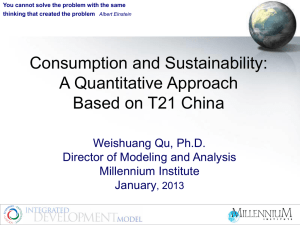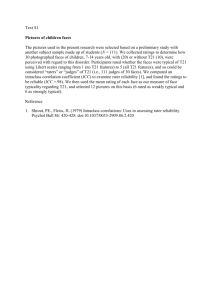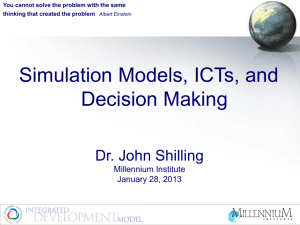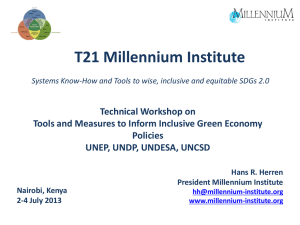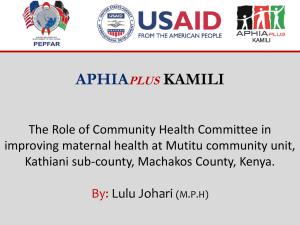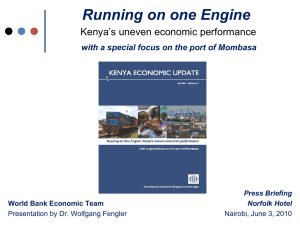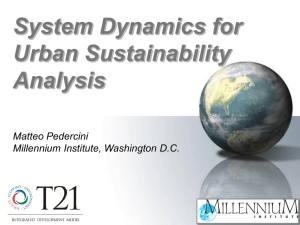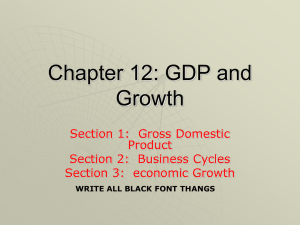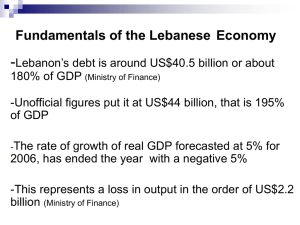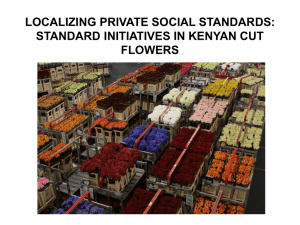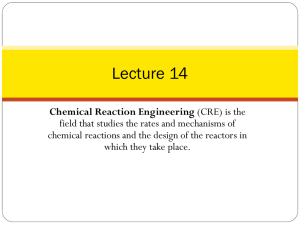EN_SessionIV_T21_KEN - Africa Adaptation Programme
advertisement
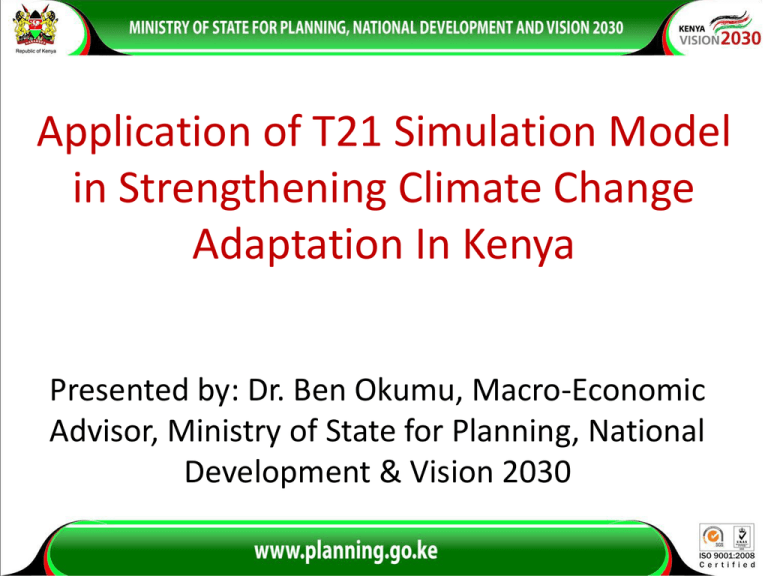
Application of T21 Simulation Model in Strengthening Climate Change Adaptation In Kenya Presented by: Dr. Ben Okumu, Macro-Economic Advisor, Ministry of State for Planning, National Development & Vision 2030 PRESENTATION OUTLINE • Nature of Kenya’s Climate Change Problem – A Historical and Sectoral Perspective – Implication on Key Macro-Economic Indicators • Description of T21 Model • Application of T21 Model in Understanding and Planning the Kenyan Economy • Primary Drivers, Outcomes and Constraints of T21 Model • Emerging Issues and Way Forward Recent History of Natural Disasters in Kenya Year Type of Natural Disaster Area Affected No. of people Affected 2004 Drought Widespread 2 -3 million 2002 Floods Nyanza/Central 152,000 1999-2000 Drought Widespread 4.4 million 1997-1998 El Nino Floods Widespread 1.5 million 1995-1996 Drought Widespread 1.41 million 1991-1992 Drought Rift valley/ Eastern, Coast 1.5 million 1985 Floods Nyanza 10,000 1983/84 Drought widespread 200,000 1982 Floods Nyanza 4000 1980 Drought Widespread 40,000 1977 Drought Widespread 20,000 Nature of Kenya’s Climate Change Problem • Vagaries of weather have been rampant lately • Impact on livelihoods has been heightened by over 75% of Kenyan Population’s dependence on Land and Natural resources for survival • Droughts, Floods, Rising Temperatures Famine, Energy Shortages, Desertification Diseases, Social Disruption • Climate Variability 3% loss of GDP per year! Historical Perspective of Kenya’s FDI, Net Inflows: 1970-2010 Kenya’s GDP Levels -1970-2010 Kenya’s GDP Per Capita (Current US $) 1970 -2010 Conceptualization of Kenya’s Production System LAND LABOUR CAPITAL PRODUCTION ECONOMIC/SOCIAL OUTPUTS - Crop Yields - Agribusiness /value addition - Manufactured goods ENVIRONMENTAL EFFECTS/OUTCOMES - Soil Erosion - Deforestation Lagged Effects… Destruction of Existing Capital stock Description of T21 Model • Model was developed and customized to capture the Kenyan Production and Decision Making System • Its uniqueness lies in its Multi-sectoral, Multidisciplinary and hence Multi-dimensional Nature • Model has capacity to capture lagged effects • It is Temporally and Spatially explicit • Has capacity to simulate various intervention scenarios Tentative Model Results • Based on the observation that Kenya needs to invest 2-4 % of her GDP to Mitigate and Adapt to Climate Change effects; i) Scenario was simulated with a 2% GDP investment ii) Amount invested is equivalent to $2.7B per year for the Period 2012-2020 • Model Results show that such investment would reduce Climate Change effects in Kenya with 3-10 years Pay back period Model Results Cont’d • Climate Change effects cant be removed entirely hence the need for Adaptation • Agricultural sector would benefit greatly from these changes thro enhanced productivity and use of sustainable production approaches • Reduced chances of collapse of production system due to floods and droughts would remove uncertainty and hence encourage commercial farming, rising output and improved food security T21 GDP Growth Rates Projections row gdp net growth 0.2 Dmnl/Year 0.15 0.1 0.05 0 1980 1990 2000 2010 2020 Time (Year) row gdp net growth : Base_v34_Adapt_A_Ag2- Ela row gdp net growth : Base_v34_Adapt_A_Ag2 row gdp net growth : Base_v34_Adapt_A row gdp net growth : Base_v34_NoAdapt_A 2030 2040 2050 Application and Use of T21 Model • Insights drawn from the Model outputs have resulted in Kenya Government’s generation and Adoption of “Climate Change Action Plan, 2012”. • Climate Change is now considered as a crosscutting issue and is being “mainstreamed” in all the planning processes at both National and County levels • MTP2 – Is being used as a unique opportunity to incorporate climate change programmes/projects in the 2013-17 Planning Cycle Primary Drivers, Outcomes and Constraints of T21 Model • T21 simulations demand dynamic and spatially explicit socio-economic and biophysical data • To generate this data, bottom-up consultations have been undertaken involving key players in all the 47 counties • “Champions” at senior levels of government (PS MEMR, PS MPND) are in place to help maintain interest and momentum of climate change adaptation • Kenya has now undertaken an intense Climate risk assessment of her Vision 2030 flagship Projects Emerging Issues and Best way forward • The challenge is how to monitor results and incorporate new knowledge and experiences in Climate Change Adaptation processes as they occur! • There is need to develop a national benefit measurement Framework to do the above and then use T21 model to measure, monitor, evaluate and verify results of Climate Change Mitigation actions, Adaptation actions and the synergies between them. THANKS! (AHSANTE!)
